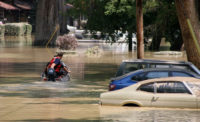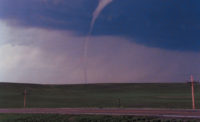Although there is room for improvement, the U.S. overall is highly prepared in the event of a health emergency or disaster, according to this year's National Health Security Preparedness Index.
The 2014 index, which was recently released by the Association of State and Territorial Health Officials, in conjunction with the Centers for Disease Control and Prevention and more than 35 development partners, shows the overall result for the U.S. is 7.4 on a scale of 10.
That result conveys that "substantial health security preparedness capability exists across the nation with progress to sustain and build upon," but also that there are areas to improve upon, the release reads.
According to the report, strong areas include countermeasure management, which received a result of 9.1; incident and information management, which received a result of 8.1; and health security surveillance, which received a result of 7.8.
Environmental and occupational health fell on the lower end of the spectrum, receiving a result of 5.9. Healthcare delivery (previously surge management) and community planning and engagement also fell at the lower end, receiving results of 6.5 and 6.7 respectively.
"This year's Index more fully reflects the range of components influencing health security of our states and the nation," NHSPI Steering Committee chairman Tom Inglesby, MD, said in the release. :With Ebola in West Africa, a resurgent strain of enterovirus in the United States, floods, mudslides and wildfires in 2014, the importance of preparedness is all the more visible. We hope the 2014 NHSPI will be used to drive dialogue, build partnerships and strengthen preparedness across the United States for these and many other disasters."


